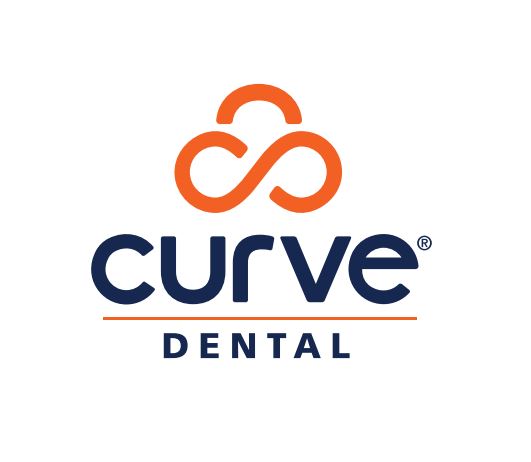Assisted hygiene is an under-utilized model that might be the key to heightened success. Registered dental hygienist and clinical coach, Amber Auger MPH, RDH, gives the inside scoop on this emerging trend.
As a dental practice owner, you’re often faced with important decisions concerning the growth trajectory of your practice. Since taking a “trial-and-error” approach to making decisions is generally too risky, you might find yourself sticking with what’s conventional.
Like the majority of dental practices, you’ve likely been running on a traditional hygiene model whereby your hygienists handle every aspect of hygiene care. It’s been working for you thus far, but you might wonder if you are missing out on valuable time and profit. Is there another option that could maximize your earnings without increasing your workload?
Enter… assisted hygiene. In this interview, Amber Auger, MPH, RDH, discusses the ins and outs of assisted hygiene ranging from its positive impact on the patient experience to signs that this model is the right choice for your practice.
Amber Auger, MPH, RDH is an accomplished dental professional and preventative dental therapy advocate. She is a sought-out international speaker, podcast host, dental marketing strategist, published author for several industry-leading publications, and the recipient of the 2019 Sunstar/RDH Award of Distinction. Amber is also the founder of Thrive in the OP and the Functional RDH.
This is the third blog post of a 6-part series where Amber shares helpful insights from a distinct viewpoint on how dentists can enhance their business success.
Assisted Hygiene… How Can it Help My Practice?
Q: Can you briefly explain what assisted hygiene is and how it differs from the traditional hygiene model?
Of course! In the assisted hygiene model, the hygienist has her own personal assistant. And depending on what state you’re in, you could really maximize what that assistant can do. In some states, assistants can go as far as making temp crowns or taking radiographic films.
In general, they’re able to collect all the data for the hygienist, so now the hygienist has more time for education and things that they can start implementing, such as salivary testing, sleep apnea screenings, and even 3D scans. Overall, the assistant helps collect more patient data and improve the patient experience.
In a perfect world, you would be able to see 1 or 2 more patients a day. But the goal isn't just to see more patients and shorten that appointment time. It’s to improve the quality of care that you're giving to the patient, especially now that there is a shortage of hygienists.
It’s really a model whereby each clinician works at their top scope of practice. The great thing about this is that hygienists can now provide an elevated standard of care because they have the help of the assistant.
Q: What are the hygiene assistant’s duties?
Assistants help the hygienist collect all the patient data. For example, if a patient comes in at 8:00 am, the assistant would see that patient first. They would update the medical history, help with the overall films, capture the patient's chief concerns, and screen blood pressure. The assistant would collect the assessment portion of that patient and then hand it off to the hygienist.
That assistant might stay in the room with the patient to help dictate periodontal charting. And the assistant would then go on to the next patient while the hygienist works with the first patient and does the traditional education that we do like oral hygiene therapy, sub gingival detoxification of gingival tissue, and helping with general education.
Q: What is the hygienist’s role in the assisted hygiene model?
The role of the hygienist is to assess and communicate what worked well and what didn't at the end of each day. The hygienist should also continue to hone those skills of working in a partnership because it does take a lot of effective communication to make sure that you’re open to balancing each other out.
Q: Can you discuss the benefits of assisted hygiene for dentists?
Sure! The great thing about this model is typically you have happier employees because what really stresses the hygienist out is waiting for an exam and feeling like they’re rushing for the doctor to come in. What stresses the doctor out is feeling that the hygienist is always waiting for them to do an exam, and maybe they can't step away from that patient at that moment. When you have an assistant who's in the room, she can start to rebook the next appointment. The assistant is being effective with their time, and the hygienist can then see their next patient.
So there's extra time and reduced stress for the dentist, the hygienist, and the assistant because now they’re not running behind waiting for an exam, and the dentist is not being rushed through their exam. Instead, it's much more cohesive.
Q: What about benefits for the hygienist?
From the overall standpoint of the hygienist, it feels like you’re able to make, in my opinion, a greater impact when this is done well. Because again, you can integrate more therapies like salivary testing and educate about sleep apnea. Hygienists are able to have assistance with collecting all of those assessments from the patient that they sometimes can't do on their own because of the fact that they may be running behind waiting for an exam.
On average, the hygienist has to wait 8 to 10 minutes for an exam. So that means you're cutting out 8 to 10 minutes of patient care time. You’re reducing your quality of care just to wait for the exam. With assisted hygiene, you can eliminate that altogether.
Q: Are there any benefits for the patient?
Definitely. From a patient perspective, you have a greater quality of care when your practice is doing this in a way that works really well. There’s a lot more energy, and it’s a faster-paced environment. As a patient, you feel well cared for, and you feel like two or even three providers are on your case who are all speaking the same language and supporting the same method.
Case compliance is typically also higher because the patient is hearing the same thing three to five times throughout the appointment. For instance, the patient might hear the hygienist say to the assistant, “Please make note of ‘x, y, and z’ for the doctor to look at.” When the doctor comes in for the exam, the assistant cues that information over and says something like, “You know, Amber noticed these areas were of concern. Can you please check those?” The dentist confirms back to that assistant and says, “Yes, those areas do need to be treated. Here's what I'd recommend.” And as the assistant is walking that patient out to the front desk, they are then hearing it again for the third or fourth time which is going to increase compliance and build a lot more trust.
Q: What are the challenges when it comes to using an assisted hygiene model?
1) The first challenge would be that a fast-paced model isn't for everybody. Some people don't want to expand what they're doing in their career and kind of want to have an easier day where they feel like they can clock in and clock out. This is not one of those types of practices for an assisted hygiene model. It takes a lot of teamwork and really good, effective communication.
2) Scheduling could also be a challenge. A staggered dovetail schedule does not necessarily take a lot more time, but it does take a little bit of extra attention to ensure that you're organized and booking at the accurate times.
Q: How do practice owners know if assisted hygiene is right for their practice?
I would start with the hygienist and see if the hygienist is open to it. Some hygienists like to work independently while others love the idea of having a collaborative approach. If the hygienist is a natural leader and feels like she could help run this column of work, then you should think about how your practice, as a team, can build the model successfully moving out.
Q: Is assisted hygiene the same as accelerated hygiene?
There’s a big difference between the two! Accelerated hygiene is where you're focused on getting as many patients as possible into that day’s schedule, whereas assisted hygiene is more supportive. You’re looking at the standards of care and adding on a whole wellness approach to your practice, in my opinion. That's really the play here… where you can add on advanced techniques that aren't necessarily really advanced, like sleep apnea and blood pressure screenings.
If you look at what is being provided in most hygiene practices, we’re about 20 years behind the science. So assisted hygiene has the opportunity to differentiate the practice whether you're a DSO model or a standalone single provider. This has a unique ability to change the way we're doing dentistry.
Q: As an RDH, have you ever worked with a hygiene assistant? What was your experience like?
I have! I worked with a hygiene assistant for a brief time and it worked absolutely phenomenally. We were excited every day to work with each other. Morning huddle was much easier. I felt like we were giving really quality care to our patients.





